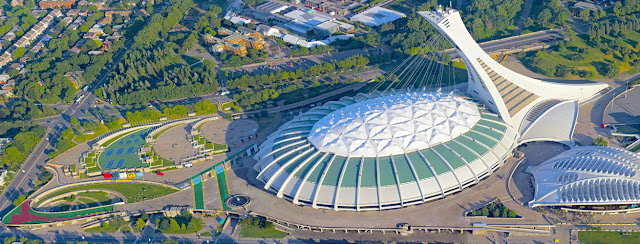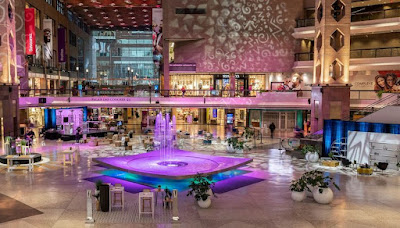- Montreal Attractions Passes: This is the big package. The MTL passport also known as the Passeport Montréal, is a tourist pass offered by Tourisme Montréal, the official tourism board of Montreal. It provides visitors with access to a variety of attractions, activities, and public transportation options at a discounted rate. Unlimited travel on Montreal's public transportation system, including buses and the metro, for a specified duration. Free or discounted admission to popular attractions, museums, and cultural sites in Montreal. These may include iconic landmarks like the Montreal Museum of Fine Arts, the Biodome, the Botanical Garden, and more. Special discounts and rebates on guided tours, cruises, outdoor activities, and entertainment options throughout the city. Exclusive rebates and discounts at select restaurants, cafes, and shops in Montreal, allowing visitors to sample local cuisine and purchase souvenirs at a reduced price. The Montreal Passport is designed to make exploring the city more convenient and affordable for tourists, providing them with a comprehensive package that covers transportation, sightseeing, and other experiences. It's a popular option for visitors looking to maximize their time in Montreal while saving money on admission fees and other expenses. It's worth noting that the specific offerings and pricing of the Montreal Passport may vary depending on the season and any ongoing promotions. Travelers are encouraged to check the official Tourisme Montréal website or inquire at tourist information centers for the most up-to-date information on the Montreal Passport and other tourist passes available in the city.
- Public Transportation Passes: The Montreal public transportation system operates on a fare system that allows passengers to use various types of passes or pay-per-use options to access buses, the metro (subway), and commuter trains. The Opus card is a rechargeable smart card used for accessing Montreal's public transportation network. It is a durable plastic card with an embedded chip that stores fare information. Travelers can purchase an Opus card at various locations, including metro stations, convenience stores, and transit centers, and then load it with funds or passes. There are two types of passes : the regular one and the reduced fare pass. Reduced fare passes are available for seniors, students, and children. These passes offer discounted rates compared to regular passes and require proof of eligibility, such as a student ID or proof of age. By using the Opus card, travelers can enjoy convenient and cost-effective access to Montreal's extensive public transportation network, making it easy to explore the city's attractions, neighborhoods, and landmarks.
- Bike Rentals: BIXI
is Montreal's public bike-sharing system, offering residents and
visitors a convenient and eco-friendly way to get around the city.
Here's how BIXI works: BIXI stations are strategically located throughout Montreal's downtown
core and surrounding neighborhoods. You can easily locate stations using
the BIXI mobile app, website, or by looking for the distinctive blue
BIXI docks on city streets. To use BIXI, you'll need to become a member. There are various
membership options available, including single ride passes, day passes,
monthly passes, and annual memberships. Visitors can typically purchase
short-term passes that provide access to the system for a specified
duration. Once you've become a member or purchased a pass, you can unlock a bike
from any BIXI station. Simply approach the station kiosk or use the BIXI
app to select a bike, enter your membership or pass information, and
receive a code to unlock the bike. With your bike unlocked, you're free to explore Montreal at your own
pace. BIXI bikes are designed for short trips and commuting, with sturdy
frames, adjustable seats, and built-in lights for nighttime riding.
Ride safely, obey traffic laws, and be courteous to pedestrians and
other cyclists. When you're finished riding, return the bike to any BIXI station in the
city. Slide the bike securely into an available dock, wait for the green
light to indicate that it's properly locked, and you're good to go.
Make sure the bike is securely docked to avoid additional fees. BIXI is available 24/7 during the operating season, making it convenient
for exploring Montreal day or night. The system operates from spring to
fall, with bikes available from April to November, weather permitting. By utilizing BIXI, visitors to Montreal can enjoy the flexibility and
convenience of cycling while reducing their environmental impact and
exploring the city's attractions, neighborhoods, and scenic pathways
with ease.
- Tourist Information Centers: Make sure to stop by one of Montreal's tourist information centers upon arrival. They often provide maps, guides, and information about current promotions and discounts for tourists. Overall, visiting Tourist Information Centers in Montreal is a valuable step to take when planning your trip or seeking assistance during your stay. Their wealth of resources, local expertise, and personalized assistance can help you make the most of your time in this dynamic and culturally rich city.
By taking advantage of these rebates, discounts and passes, you can make the most of your time in Montreal while saving some money along the way! In conclusion, discounts and passes for tourists in Montreal serve as invaluable tools for enhancing the overall travel experience while effectively managing expenses. As we've explored, Montreal offers a diverse array of options tailored to accommodate various interests, preferences, and budgets. From the convenience of the Montreal Attractions Passes, which provide access to multiple attractions at discounted rates, to the flexibility of public transportation passes like the Opus card, which offer unlimited travel on buses and the metro, visitors have ample opportunities to explore the city affordably. These passes not only streamline the logistics of sightseeing but also unlock exclusive perks and savings that may otherwise be elusive. Moreover, the role of Tourist Information Centers cannot be overstated. These hubs of local knowledge serve as indispensable resources, offering personalized recommendations, event information, and assistance with bookings. Whether seeking advice on dining options, accommodation, or navigating the city's cultural landscape, the expertise and guidance provided by Tourist Information Centers are invaluable assets for travelers. Furthermore, Montreal's commitment to sustainability and accessibility is reflected in initiatives such as BIXI, the city's bike-sharing system. By offering an eco-friendly and cost-effective means of transportation, BIXI promotes exploration while minimizing environmental impact, contributing to a more enjoyable and responsible travel experience. In essence, the availability of discounts and passes for tourists in Montreal not only fosters affordability but also fosters inclusivity, enabling travelers from all walks of life to immerse themselves in the city's rich tapestry of culture, history, and charm. Whether embarking on a solo adventure, a family vacation, or a romantic getaway, these resources empower visitors to create memories that endure long after their time in Montreal has come to an end. So, whether you're marveling at world-class museums, savoring culinary delights, or meandering through picturesque neighborhoods, let the discounts and passes be your passport to unlocking the wonders of Montreal, one unforgettable experience at a time.

































